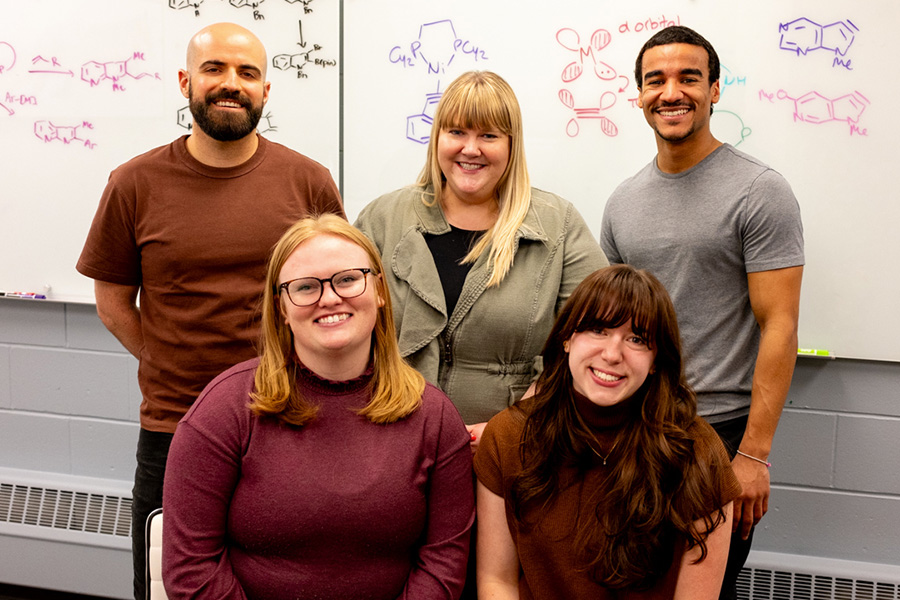
For the first time, researchers in the University of Minnesota College of Science and Engineering (CSE) created a highly reactive chemical compound that eluded scientists for more than 120 years. The discovery, published in Science, could lead to new drug treatments, safer agricultural products and better electronics.
For decades, researchers investigated molecules called N-heteroarenes, which are ring-shaped chemical compounds containing one or more nitrogen atoms. Molecules with a N-heteroarene core are widely used for medicinal applications, lifesaving pharmaceuticals, pesticides, herbicides and electronics, but they are extremely challenging for chemists to make.
“While the average person does not think about heterocycles on a daily basis, these unique nitrogen-containing molecules are widely applied across all facets of human life,” said Courtney Roberts, senior author of the study and an assistant professor in CSE.
The team’s experiments were accomplished using organometallic catalysis — the interaction between metals and organic molecules. The research also required collaboration between organic and inorganic chemists, a common practice at the University of Minnesota.
“We were able to run these chemical reactions with specialized equipment while getting rid of elements commonly found in our atmosphere,” said Jenna Humke, a graduate student and lead author of the study. “Luckily, we have the tools to do that at the University of Minnesota, including a team of experts in all fields of chemistry — a vital component in solving this long-standing challenge.”
After introducing the chemical compound in this study, the next step is to make it widely available to chemists across multiple fields to streamline the creation process. This could help solve important problems like preventing food scarcity and treating illnesses.
This work was primarily funded by the National Institutes of Health and the National Science Foundation. Funding was also provided by four University of Minnesota-sponsored graduate research fellowships and start-up funding provided by the Department of Chemistry.
About the College of Science and Engineering
The University of Minnesota College of Science and Engineering brings together the University’s programs in engineering, physical sciences, mathematics and computer science into one college. The college is ranked among the top academic programs in the country and includes 12 academic departments offering a wide range of degree programs at the baccalaureate, master's, and doctoral levels. Learn more at cse.umn.edu.
- Categories:
- Science and Technology
- Science





